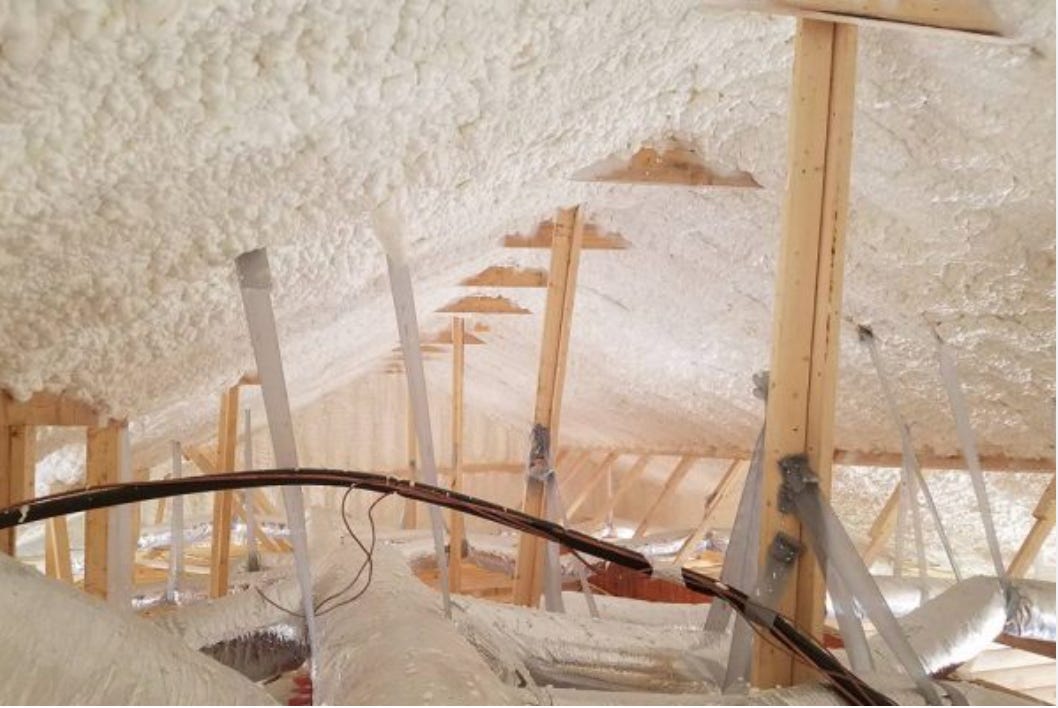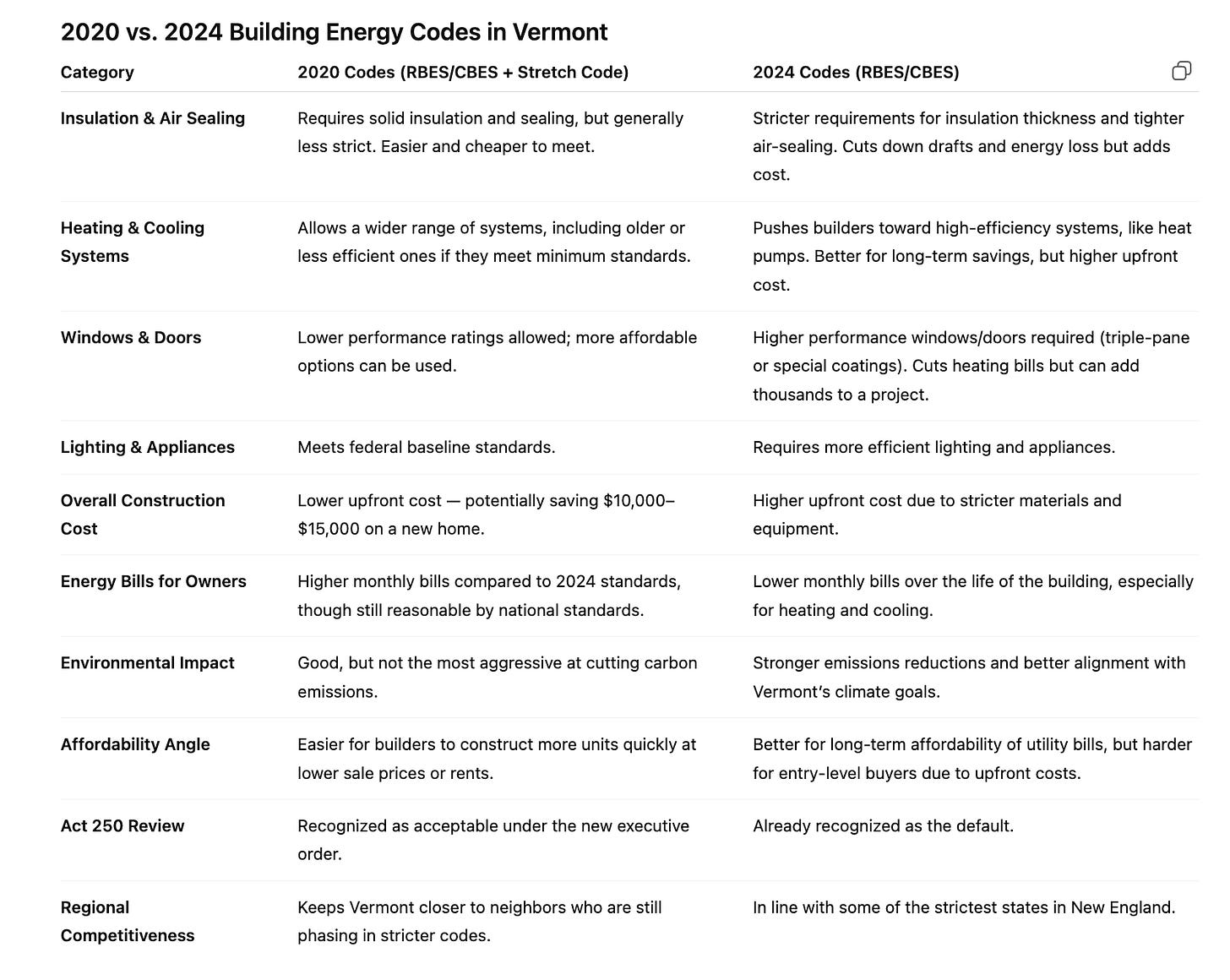Breaking Down Gov. Scott's Housing Order, Part 1: Energy Code Overhaul
What Vermont’s New Building Energy Code Reform Means for Housing and Affordability
Governor Phil Scott has issued an executive order aimed at speeding up housing construction in Vermont while still keeping environmental protections in place. Section I of the order, called Building Energy Code Reform, focuses on how builders must meet energy efficiency rules in new homes and commercial buildings. Here’s what it means in clear terms.
The Basics: What Are Building Energy Standards?
Vermont requires all new construction to follow rules—called Residential Building Energy Standards (RBES) and Commercial Building Energy Standards (CBES)—that make sure homes and businesses are energy efficient. These codes cover things like insulation, windows, heating systems, and ventilation.
The state updates these rules every few years. The 2020 standards are already in place, while the 2024 standards are stricter, requiring better insulation and more efficient heating and cooling systems.
The tension is this: tougher energy codes save energy in the long run, but they can also make building new housing more expensive upfront.
1.1 Reinstatement of 2020 Standards
Option for Builders
According to the order, any construction project that starts on or after July 1, 2024 can follow either the 2020 codes or the 2024 codes. In other words, builders get to choose.
Example: If a contractor is building a new duplex in Barre, they can use the 2020 rules (which are less expensive to meet) instead of the 2024 rules. That could shave thousands off the cost, which might make the units more affordable for buyers or renters.
Act 250 Alignment
Act 250, Vermont’s land-use review law, has to update its paperwork so that it recognizes the 2020 codes as valid. This avoids confusion and makes sure local review boards don’t reject projects that follow the older standards.
Public Messaging
The Department of Public Service (DPS) must clearly explain to builders, towns, and the public that both codes are acceptable. Importantly, the materials will highlight that this flexibility is designed to make housing more affordable.
Training and Support
The DPS, along with other state agencies, will keep running trainings for builders. The goal is not to punish those who stick with 2020 codes but to encourage everyone to voluntarily aim higher (toward 2024 standards) when possible.
1.2 Implementation Review
By May 31, 2026, the Department of Public Service must deliver a report to the Governor that answers four big questions:
Cost Impacts on Housing
The report will look at whether the stricter 2024 codes raise building costs so much that it hurts affordability.Example: If building a single-family home costs $15,000 more under 2024 rules, how does that affect home prices compared to savings on utility bills?
Compliance Data
The state will compare how many builders chose the 2020 rules versus the 2024 rules and what lessons can be drawn from those early projects.Future Recommendations
The DPS will recommend changes to strike a balance between Vermont’s energy goals (like reducing greenhouse gas emissions) and the urgent need for more housing.Regional Comparison
Vermont will also look at what nearby states in New England and the mid-Atlantic are doing. The idea is to see whether Vermont’s rules are in line with the region—too strict, too lenient, or just about right. This matters because being out of step could make Vermont less competitive in attracting builders and businesses.
Why This Matters
According to Governor Scott, the intent behind this section is clear: Vermont desperately needs more housing, and rigid energy rules could make building slower and more expensive. By giving builders the choice of which code to follow, the state hopes to remove barriers without abandoning environmental goals.
For everyday Vermonters, this could mean:
More homes getting built faster.
Lower upfront costs for buyers.
Some homes built to the stricter 2024 standards, especially when developers want long-term energy savings.
What Happens Next
Builders already breaking ground after July 1, 2024 can decide which energy code to use. The Department of Public Service will begin public outreach and continue offering training. By 2026, the Governor will have data on costs, compliance, and regional comparisons to help shape the next set of building energy codes.
In short: Vermont is pressing pause on automatically moving to tougher energy rules in order to avoid slowing down desperately needed housing construction—while still keeping an eye on long-term energy efficiency.




